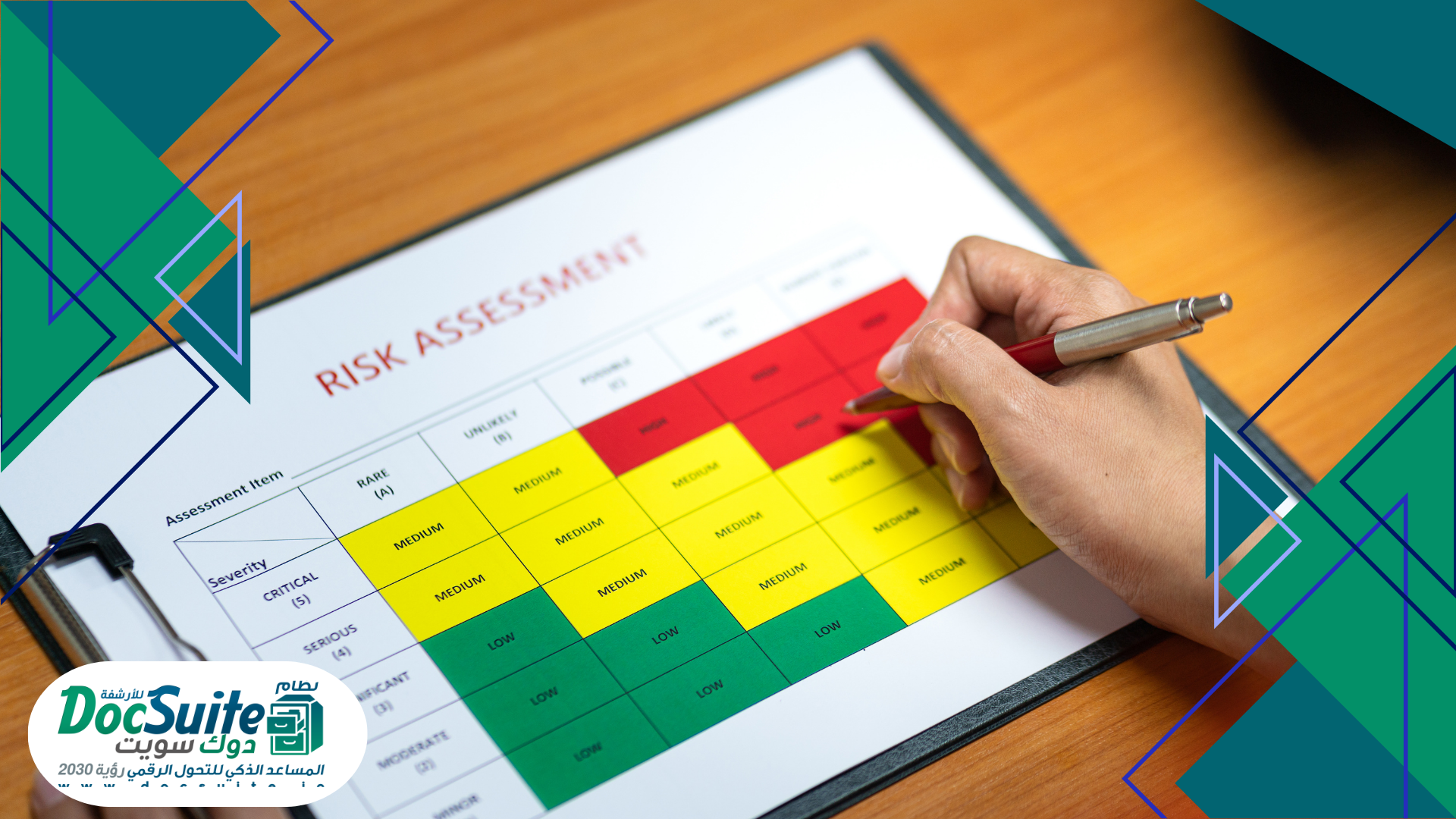The Nine-Box Grid is considered one of the important tools in economics and business management. It is used to analyze company performance and classify them based on their financial and investment performance. This grid represents an effective mechanism for determining a company's market position and devising future strategies for success and sustainability.
The Nine-Box Grid relies on dividing companies into nine boxes, each representing a group of companies characterized by certain levels of financial and investment performance. The aim of this grid is to identify the boxes that investors should focus on and invest in by analyzing the investment returns and their potential risks.
Using the Nine-Box Grid is essential for any investor who wants to make well-informed and effective investment decisions. It provides the necessary tools to understand the market and better analyze companies, helping in making the right decisions that achieve the desired returns and minimize potential risks.
What is the Nine-Box Grid?
The Nine-Box Grid is a tool used in human resource management to evaluate employee performance and developmental needs. This tool is effective in identifying talent and determining the training and development needs of employees. The grid relies on two main assessments:
Performance - evaluates how well the employee achieves their goals and performs their daily tasks.
Potential - identifies the employee's potential for future growth and development.
The grid is represented in a 3x3 matrix, where the horizontal axis represents employee performance and the vertical axis represents developmental potential. The matrix is divided into nine boxes, each representing different groups of employees
High Performers & High Potentials (Top Right)
Employees who are high performers with significant growth potential.
Solid Performers & High Potentials (Middle Right)
Employees who perform steadily with significant growth potential.
Low Performers & High Potentials (Bottom Right)
Employees who perform poorly but have significant growth potential.
High Performers & Moderate Potentials (Top Middle)
Employees who perform excellently but have moderate growth potential.
Solid Performers & Moderate Potentials (Middle Middle)
Employees who perform steadily with moderate growth potential.
Low Performers & Moderate Potentials (Bottom Middle)
Employees who perform poorly with moderate growth potential.
High Performers & Low Potentials (Top Left)
Employees who perform excellently but have low growth potential.
Solid Performers & Low Potentials (Middle Left)
Employees who perform steadily with low growth potential.
Low Performers & Low Potentials (Bottom Left)
Employees who perform poorly with low growth potential.
This grid helps managers identify talent, direct development strategies, and motivate employees effectively.

Comprehensive Guide to Implementing the Nine-Box Grid in Your Organization
Implementing the Nine-Box Grid in your organization requires good preparation and precise execution to ensure maximum benefit from this tool. Here’s a comprehensive guide to implementing the Nine-Box Grid in your organization:
Define Objectives:
Identify the goals you want to achieve by implementing the Nine-Box Grid, such as identifying key talents, determining development needs, and motivating outstanding employees.
Educate the Team:
Educate the team on the concept of the Nine-Box Grid, its importance, and how it impacts development and promotion strategies within the organization.
Develop Standards:
Define the criteria to be used to evaluate employee performance and potential, ensuring they are clear and well-defined.
Performance Evaluation:
Evaluate each employee's performance and potential using the Nine-Box Grid, marking the appropriate box for their status.
Data Analysis:
Analyze the data collected from employee evaluations to identify patterns, trends, and developmental gaps.
Develop Individual Plans:
Based on the data analysis, develop individual development plans for each employee, targeting their strengths and addressing their weaknesses.
Implement Plans:
Put development plans into action and monitor employee progress, evaluating the impact of these plans on their performance and potential.
Continuous Evaluation:
Conduct regular evaluations of employee performance and potential using the Nine-Box Grid, updating the marks as needed.
Motivate Performance:
Use the results of the Nine-Box Grid to motivate outstanding employees and provide support and guidance to those needing improvement.
Adapt and Improve:
Continuously review and improve the process of implementing the Nine-Box Grid based on your experiences and changes in the organization’s and employees' needs.
It is important that the implementation of the Nine-Box Grid in your organization be an ongoing and evolving process, allowing you to improve human resource management and achieve your organizational goals.
The Role of Human Resources Management in the Nine-Box Grid
In the face of rapid developments in the business and technology world, human resources management plays a crucial role in the success and sustainability of companies. Organizations today face increasing challenges in attracting and developing talent, enhancing performance and creativity, and managing employee relations in a way that reflects the company's values and achieves its strategic goals.
Human resources management today is not just about managing human resources but has become a strategic partner contributing to the achievement of organizational goals and supporting sustainable growth. From this perspective comes the role of an HR management system like DocSuite, which is considered an essential tool for managing human resources effectively and efficiently.
Let’s explore the role of DocSuite HR management system in achieving the objectives of the Nine-Box Grid by identifying and developing talents, managing performance, and creating a positive work environment that reflects the company’s culture and encourages excellence and creativity.
DocSuite HR Management System can significantly contribute to achieving the objectives of the Nine-Box Grid through various methods, including:
Identifying Emerging Talents and High Performers:
DocSuite can track and periodically evaluate employee performance through its performance evaluation feature. Managers and supervisors can easily create and manage evaluation processes, set predefined criteria and goals, and provide feedback and guidance based on the results. This helps identify emerging talents and high performers by analyzing data and using this information to develop plans for nurturing and developing these talents, whether by offering appropriate training opportunities or assigning them to roles that match their abilities and skills.
Strategic Planning for Employee Development and Performance Improvement:
DocSuite can assist HR management in developing strategic plans for employee development, including providing appropriate training and conducting regular performance evaluations to improve their performance. Using this information, the management can develop customized training plans that meet employee needs and enhance their capabilities and skills. Additionally, regular performance evaluations can be organized to track employee progress and improve their performance, thus enhancing work efficiency and achieving organizational goals.
Making Smart HR Decisions:
DocSuite can provide comprehensive reports and analyses on the organization’s human resources, enabling management to make smarter decisions regarding recruitment, development, and performance management. With these reports and analyses, management can better understand the current status of the organization’s human resources and identify strengths and weaknesses. This information can also be used to make wise recruitment decisions, such as determining hiring needs and choosing effective methods to attract talent. Furthermore, this data can be used to develop performance management strategies and direct investments in employee development more effectively and efficiently.
Creating a Positive Work Environment:
By tracking job satisfaction levels and understanding employee needs, DocSuite can help management create a positive work environment that motivates employees to excel and innovate. Understanding these needs and demands allows management to implement positive changes in the work environment that reflect its interest in its employees and enhance their sense of belonging and appreciation. For example, improving excellence and innovation programs, enhancing internal communication, and improving the collective work environment.
By effectively using an HR management system, the organization can benefit from improving employee performance, enhancing innovation and creativity, thus achieving the objectives of the Nine-Box Grid more effectively and efficiently.
Communication and Motivation
By effectively implementing the Nine-Box Grid, the organization’s HR management can enhance communication and motivation among employees. By explaining the concept of the grid and encouraging active participation in the performance evaluation process, employees can be motivated to improve their performance and develop their skills. The management also emphasizes the importance of teamwork and enhancing the team spirit, contributing to creating a positive work environment that promotes excellence and innovation.
Using the Nine-Box Grid as an effective tool in HR management allows organizations to achieve their goals more effectively and efficiently. This grid helps identify emerging talents, develop them, and motivate employees to innovate and excel. It also serves as a means to improve the overall performance of the organization and build a positive and motivating work environment.
HR management plays a crucial role in the success of organizations, and adopting the Nine-Box Grid can have a significant impact on achieving their goals and sustainable growth. By better directing and motivating employees, organizations can make the most of their skills and potential, enhancing excellence and innovation and ensuring competitiveness in the market.
